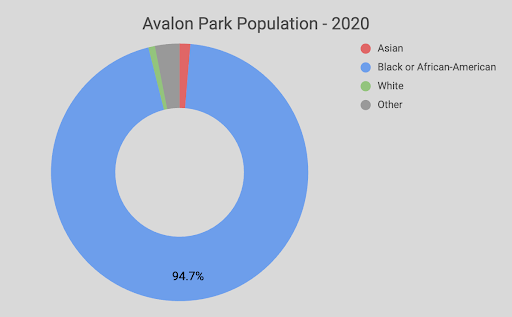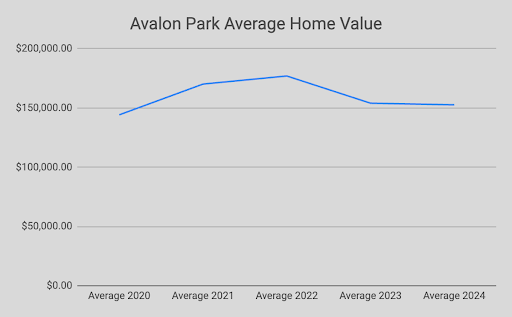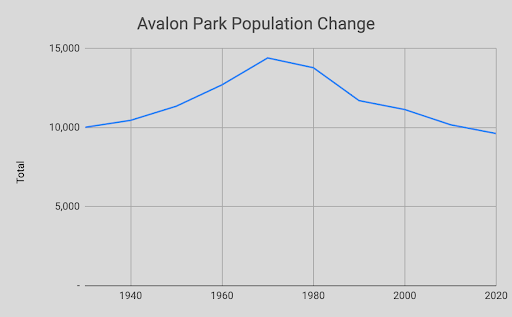Avalon Park: Neighborhood formerly known as Pennytown
Nov 19, 2025
Introduction
Avalon Park Community Area 45 is one of Chicago’s most quietly consistent neighborhoods, defined by tidy bungalows, strong community pride, and a deep history of middle-class Black homeownership. Bounded by 87th Street to the north, 95th Street to the south, South Chicago Avenue to the east, and Stony Island Avenue to the west, Avalon Park sits on the southeast side as a stable, residential pocket that has weathered urban change with remarkable steadiness.
Trivia Question:
Which famous Chicago DJ and radio trailblazer grew up in the Avalon Park area before rising to national prominence in the 1970s?
(Answer at the end of this post.)
Avalon Park by the Numbers


Origins and Early History
Long before it became a desirable residential neighborhood, Avalon Park was low-lying, marshy prairie. In the late 1800s, the area was known as “Indian Hill” one of several sandy ridges left behind by prehistoric glacial movement. Early farmers struggled with drainage, and the land remained sparsely settled well into the early 20th century.
At first called Pierce's Park, the area became known as Pennytown, named after a general store owner named Penny who sold homemade treats. In 1910, Avalon Park Community Church members successfully led an effort to rename the community Avalon Park. The church, community, and a local street pay homage to the English Isle of Avalon, believed to be the burial place of legendary King Arthur. Avalon Park was created as part of a city initiative to bring small parks into developing communities. However, the surrounding land still required extensive drainage improvements, and the Chicago Sanitary District eventually undertook major sewer projects to make homebuilding viable.
By the 1920s and 1930s, Avalon Park blossomed into a bungalow-heavy, working- and middle-class neighborhood. The population was largely Irish, German, and Scandinavian, with a network of small businesses along 87th and Stony Island providing everyday necessities.
Transformation and Evolution
Avalon Park’s most defining shift came after World War II. As the GI Bill expanded homeownership access, the neighborhood became one of Chicago’s most sought-after bungalow communities. Schools were strong, the housing stock was solid, and proximity to the booming South Chicago steel mills made it ideal for stable, upwardly mobile families.
Rise of Black Homeownership (1950s–1970s)
Between the 1950s and early 1970s, Avalon Park saw a demographic transition as African American families (many part of the Great Migration) moved in from older, overcrowded neighborhoods such as Bronzeville and Fuller Park. Unlike many communities that experienced rapid disinvestment or blockbusting, Avalon Park’s shift was comparatively orderly and community-centered, driven by:
- high-quality housing
- strong churches
- involved block clubs
- supportive local institutions
For decades, Avalon Park became synonymous with Black middle-class stability, producing generations of professionals, educators, and civic leaders.
Historical Landmarks and Structures
Avalon Park Fieldhouse & Park (1215 E. 83rd St.)
The heart of the neighborhood since 1910, featuring ballfields, a playground, community rooms, and decades of youth programming. Generations of South Side families grew up in and around this park.
St. Felicitas Catholic Church (84th & Blackstone)
A major spiritual anchor established in 1921, later becoming a predominantly African American parish known for education, social outreach, and community advocacy.
Avalon Regal Theater (just east in South Shore, historically tied to the area’s cultural orbit)
While technically outside the boundaries, it was a major entertainment destination for Avalon Park residents during the mid-20th century, reflecting the cultural economy of the South Side.
Historical Figures from Avalon Park
(These individuals are verified to have grown up in, lived in, or are strongly tied to the Avalon Park neighborhood.)
Hon. Elgie R. Sims Jr.
Illinois State Senator (6th District) whose public service career is connected to the Avalon Park/Chatham area. Sims has long been an advocate for community investment, education, and public safety on the South Side.
Aldon “Butch” Wilson
One of Chicago’s early African American firefighters to ascend to a district chief role, known locally for community mentorship and ties to Avalon Park family networks.
Little-Known Historical Fact
Avalon Park once had one of the most advanced neighborhood drainage systems in the entire city. Constructed during the early 1900s, the deep-bore sewers were considered innovative for their time, allowing the swampy land to be transformed into stable ground for homes. Chicago engineers later used Avalon Park’s drainage model when planning systems for other South Side communities.
Historical Events
The 1960s “Stony Island Corridor” Commercial Boom
With Stony Island Avenue serving as a major arterial route, Avalon Park benefited from a surge of retail, banking, and professional services. It was one of the rare South Side communities where Black-owned businesses successfully replaced departing white-owned ones helping stabilize the neighborhood for decades.
Education Advocacy Era (1970s–1990s)
Avalon Park residents became known for school advocacy, particularly around:
- Gillespie Elementary
- St. Felicitas School
- Arthur Ashe Elementary (after 1980s boundary shifts)
Block clubs and parents’ groups in Avalon Park often led the push for school equity on the South Side.
Housing Preservation Movement (1980s–2000s)
When many Chicago neighborhoods faced bungalow decay, Avalon Park organized block-by-block efforts to maintain lawns, facades, and roofs helping the neighborhood retain high housing quality relative to median South Side trends.
Conclusion
Avalon Park may not make flashy headlines, but it represents something rare: generational stability, strong community identity, and a legacy of middle-class achievement on Chicago’s South Side. From its bungalow-lined streets to its churches, fieldhouse, and history of civic engagement, Avalon Park stands as a testament to what thoughtful development, resilient families, and neighborhood pride can build over time.
Whether you’re exploring Chicago’s neighborhoods, tracing family roots, or discovering the city’s overlooked stories, Avalon Park offers a rich, layered history worth knowing and visiting.
Trivia Answer:
Herb Kent, “The Cool Gent,” the legendary Chicago DJ, grew up in the Avalon Park area before launching his groundbreaking radio career.
Stay connected with news and updates!
Join our mailing list to receive the latest news and updates from our team.
Don't worry, your information will not be shared.
We hate SPAM. We will never sell your information, for any reason.


